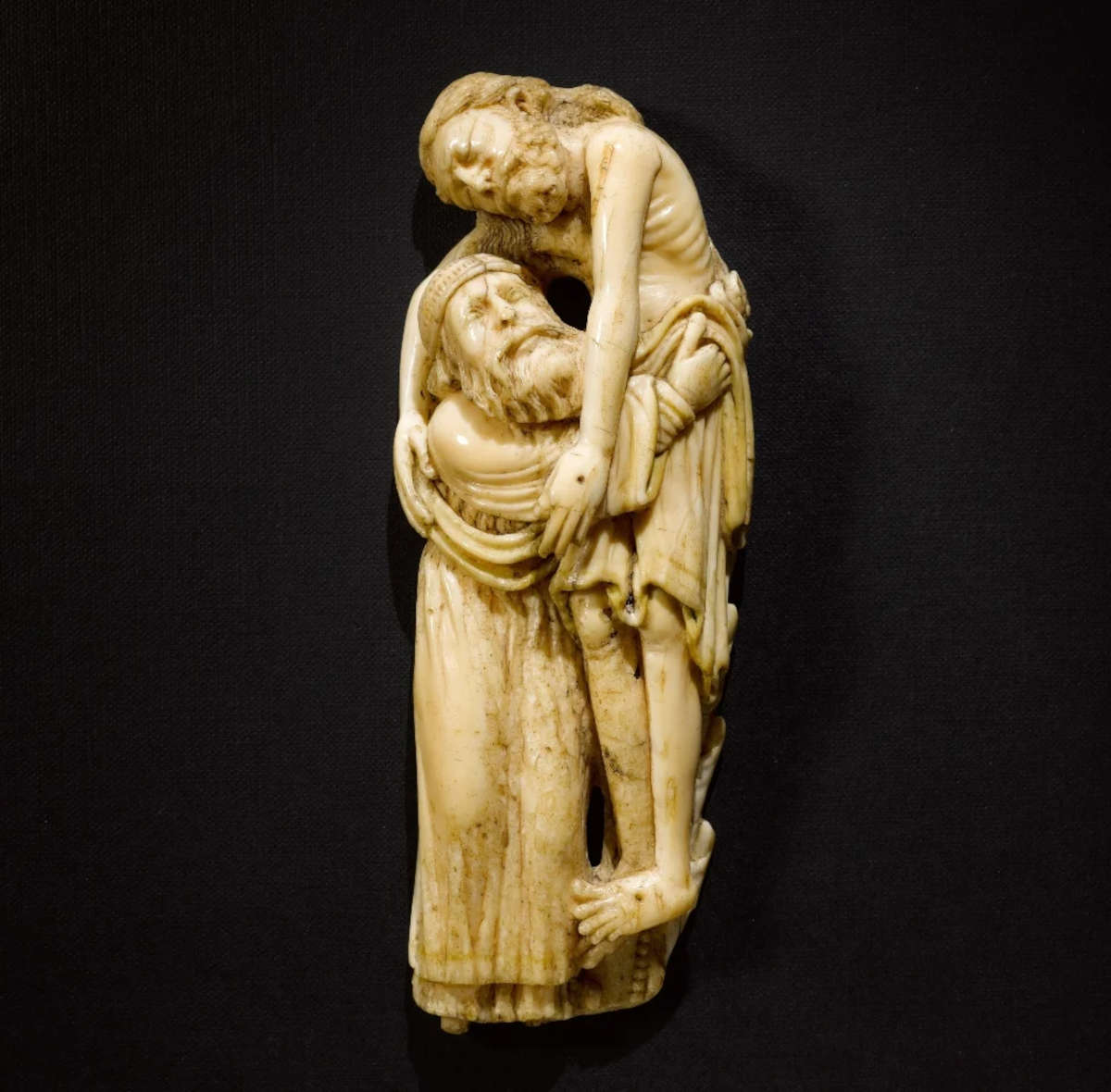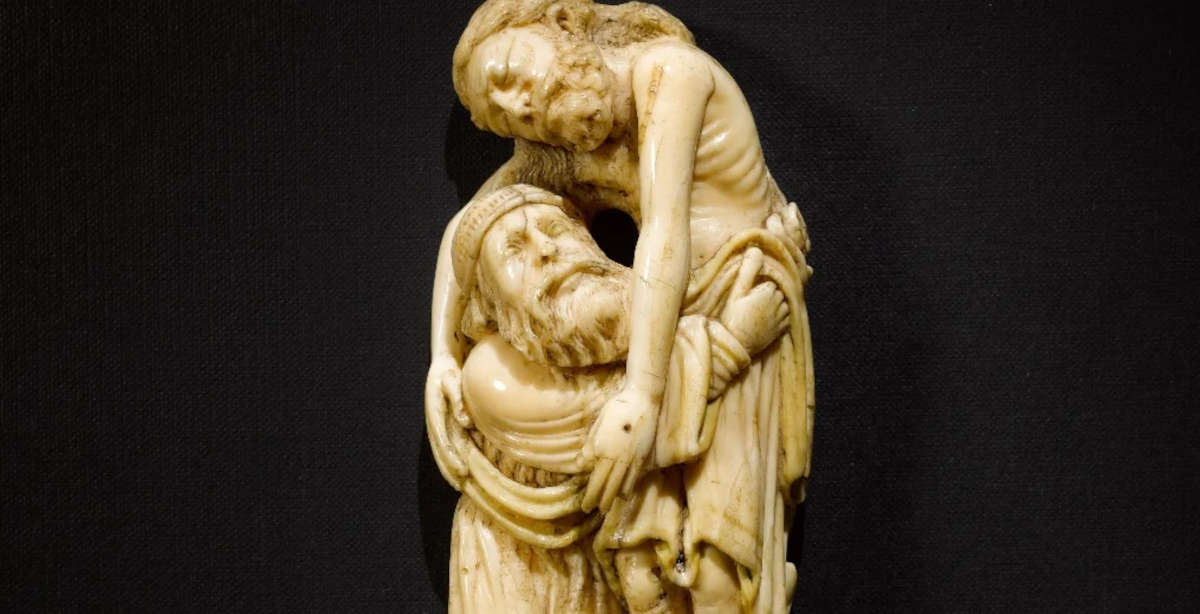London, V&A Museum rescues a very rare Romanesque ivory from being exported
Success in London for an initiative by the Victoria&Albert Museum to save a rare walrus ivory sculpture depicting the Deposition of Christ from export. The work had in fact been sold at the end of 2023 by Sotheby ’s to the Metropolitan Museum in New York, for the sum of more than $2.5 million, on condition, however, that an export license be granted by the relevant bodies. However, the UK had placed a temporary export freeze on the work, placed in November 2023 by the Department of Culture, Media and Sport: the temporary freeze, in effect until last Feb. 2 (extendable by four months), was to give a potential buyer in the UK time to adjust to the Metropolitan’s offer or signal its serious intention to raise the necessary funds for the purchase.
The V&A eventually managed to set aside the sum to purchase the sculpture (£2 million), considered one of the finest and most important examples of English Romanesque ivory sculpture surviving today. The acquisition was supported by a £700,000 grant from the National Heritage Memorial Fund and a £350,000 grant from the Art Fund, as part of a national public appeal that included support from grant-giving organizations, as well as individuals, patrons, museum members, and those who bequeathed a donation in their wills. As a result, the museum acquired the sculpture, which is now part of its permanent collection and will be on public display in the V&A’s Medieval and Renaissance galleries in South Kensington by the end of the year, after having been on display at the V&A itself on long-term loan for 40 years, from 1982 to 2022. The sculpture will be reunited with the only known surviving piece believed to belong to the same ensemble, a fragmentary ivory sculpture depicting Judas at the Last Supper, said to have been discovered in Wakefield in the 18th century and donated to the V&A in 1949. Together, both works would likely have been part of a larger work showing scenes from the Passion of Christ. At the V&A South Kensington, the two pieces have been displayed side by side for decades.

The Deposition is dated around 1190-1200 and was likely made in York, one of the most important medieval centers of art patronage, trade, and religion in the United Kingdom. A revealing example of the craftsmanship and taste of high society in northern England in the late 12th century, the Deposition depicts the moment in the Passion story when Christ’s body is lifted from the cross by Joseph of Arimathea. The Deposition has been praised by scholars both for its author’s masterful skill in ivory carving and for its embodiment of feelings of human suffering, empathy and compassion. The Deposition offers a fascinating look at the art and craftsmanship of England during the Middle Ages, surviving the widespread destruction of religious art and imagery during the English Reformation in the 16th century. It is considered an exceptionally rare piece, as well as an invaluable resource for the study of cultural heritage and history in England and beyond, as it provides important information for studying patronage and taste in the Romanesque period, global trade networks at the time, and the historical sourcing of materials such as walrus ivory. In the past, the object has been exhibited at the Metropolitan Museum of Art (1970) and the Hayward Gallery (1984).
“I am thrilled that the V&A was able to save this foundational object of English art for the nation,” said Tristram Hunt, director of the V&A. “A lost history of Christian culture, Romanesque design and medieval craftsmanship is captured in this sublime little sculpture. I am extremely grateful to all those who contributed so generously to secure this wonderful piece for the national collection.”
“The beautiful and expressive 12th-century Deposition from the Cross,” says Simon Thurley, chairman of the National Heritage Memorial Fund, “is one of the most important surviving English pieces from the Romanesque period. I am thrilled that the support of the National Heritage Memorial Fund will save the sculpture for the nation and secure it a home at the V&A for the public to enjoy forever.”
Jenny Waldman, director of the Art Fund, said, “This exceptional sculpture of the Deposition from the Cross provides a rare insight into our medieval history. I am delighted that Art Fund was able to support the V&A in acquiring this extraordinary piece for its permanent collection, ensuring that it remains a highlight in medieval and Renaissance galleries for all to enjoy .”
 |
| London, V&A Museum rescues a very rare Romanesque ivory from being exported |
Warning: the translation into English of the original Italian article was created using automatic tools. We undertake to review all articles, but we do not guarantee the total absence of inaccuracies in the translation due to the program. You can find the original by clicking on the ITA button. If you find any mistake,please contact us.




























